I may live in a large county with a small population in SE Oregon but there is always something interesting going on. On Saturday, I attended The Archeology and Cultural Keepers Roadshow in the Hines, OR Park.
The opening comments told me it has been happening in Harney County for many years. Why this is the first year I discovered it before it happened, I don’t know. It is the type of event that I like to wander through.
There were booths telling about archeological finds in the area, about rocks, and groups in the area. There were several booths hosted by the Burns Paiute tribe. The people in the Burns area are mostly descendants of the Wadatika Band. They originally roamed 5250 square miles in central-southeastern Oregon, Northern Nevada, northwestern California and western Idaho. They are one of the few tribes who were allowed to keep their language. Because the the Bannock War of 1878 forced the Wadatika from the land the government granted them in 1869 called the Malheur Reservation, when the Paiutes returned after being forced to Washington, they Malheur had been taken back by the government. The Wadatika who returned set up a temporary tribal encampment outside of Burns, OR. The tribe eventually purchased the land and it is now the Burns Paiute Reservation.
Because they are welcomed by the community, the tribal members work with the Harney County Chamber to share their culture with everyone. It was through the Harney Chamber and tribal member Beverly Beers that I participated in the pine needle basket making event.
At the Roadshow, I visited with Beverly at her booth that showcased the methods of baskets and weirs that the Wadatika made from natural resources. Pine needles, tule, and sticks. Another booth showcased the first foods the tribe has lived on for centuries. I learned about the biscuitroot and was even given one to sample. It was small and white and when peeled tasted like a parsnip. I should have taken a photo of it before I ate it! They also had chokecherries. I didn’t realize they were so small! And a blanket made from rabbit skins. It looked warm and felt soft.
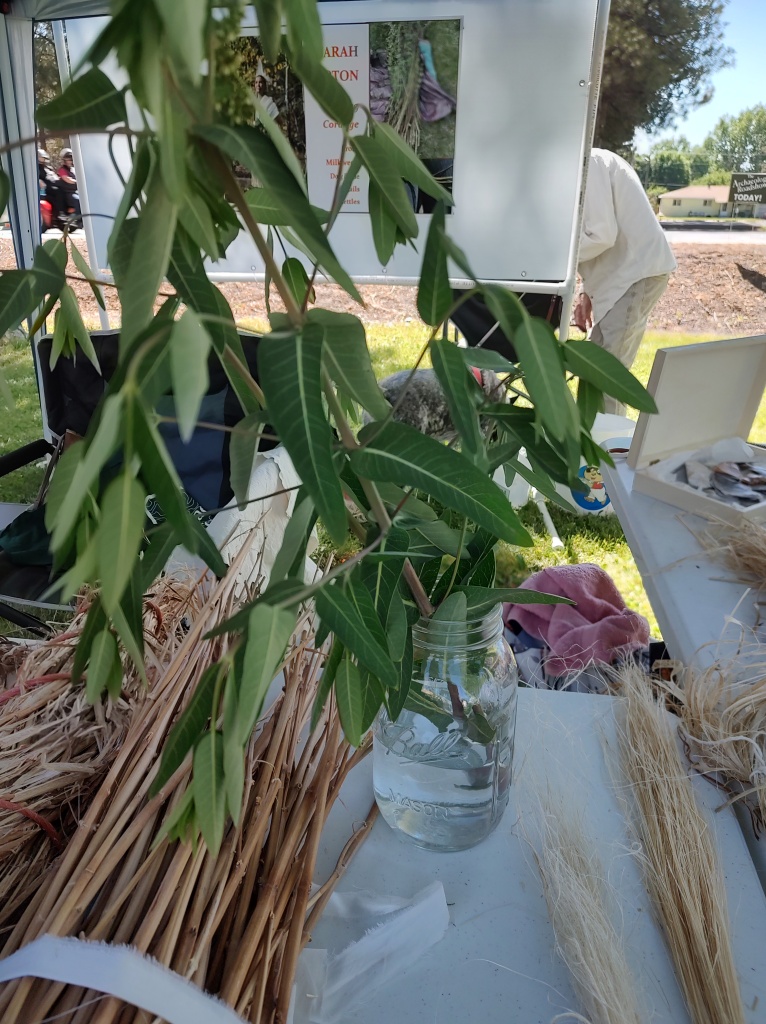
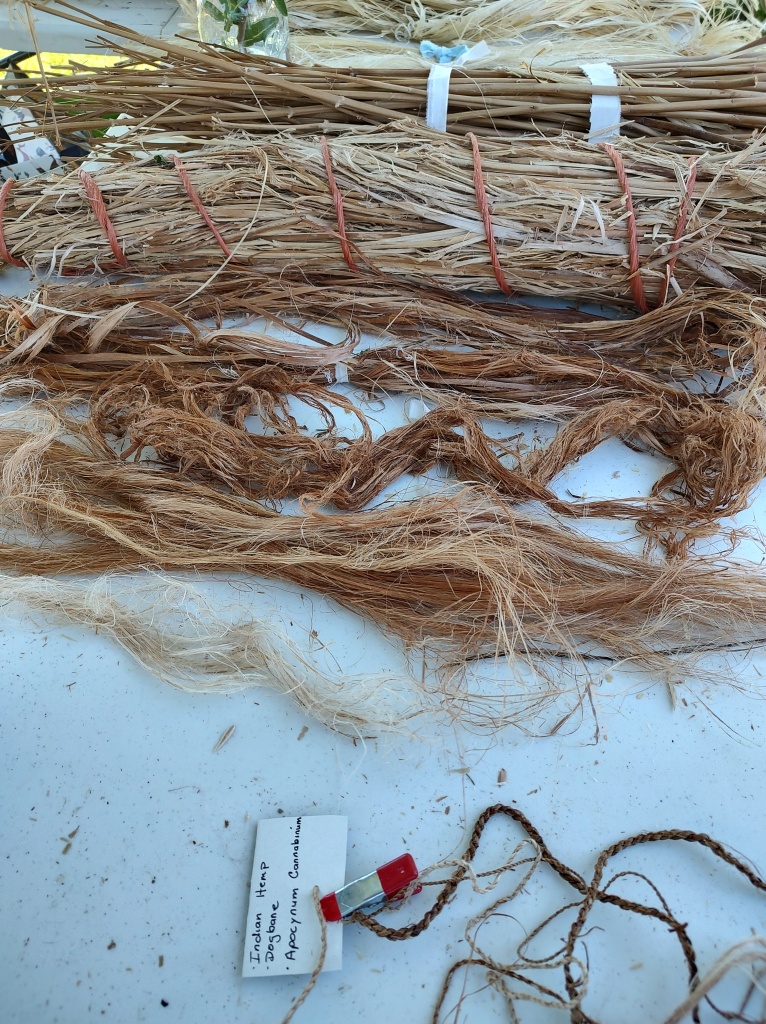
Another booth showed how to make fiber from three plants. The milkweed, Dogbane, and stinging nettle. The woman at the booth explained the whole process to me.
Dogbane is the prettiest in color and I was told is the easiest to work with and the strongest of the three types of fiber.
You removed the leaves from the stems, then she used a rolling pin to crack the stem open by rolling the pin down the stem. She said at home she uses an old wringer machine, like they used to wring out wet clothing that had been washed.
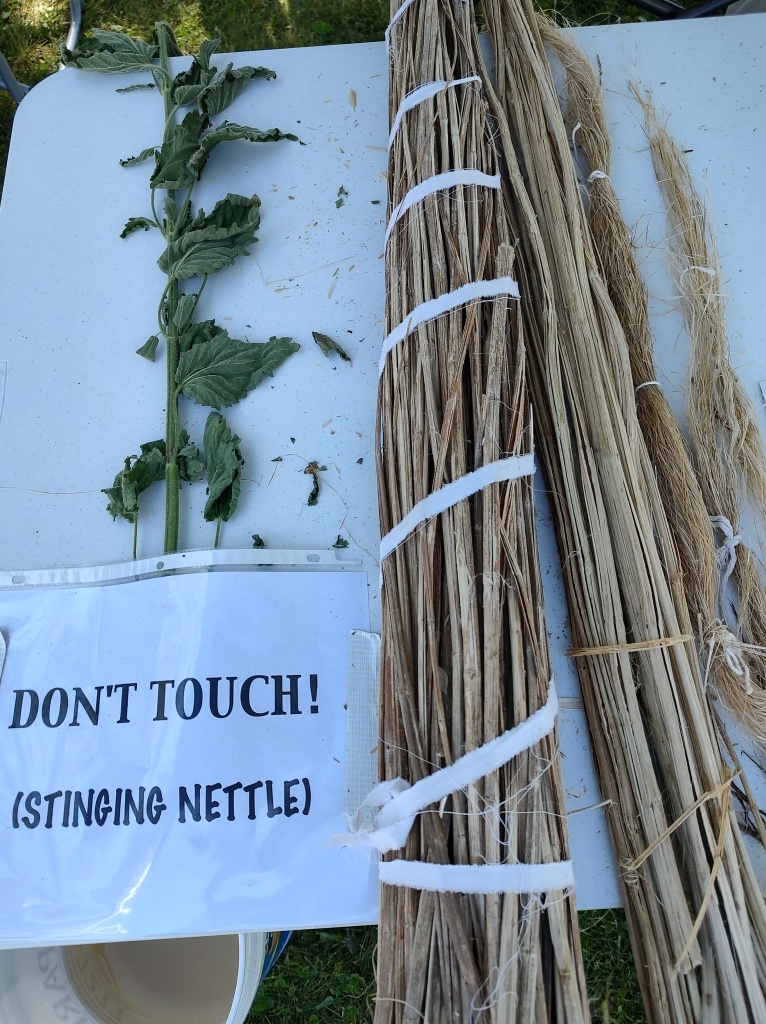
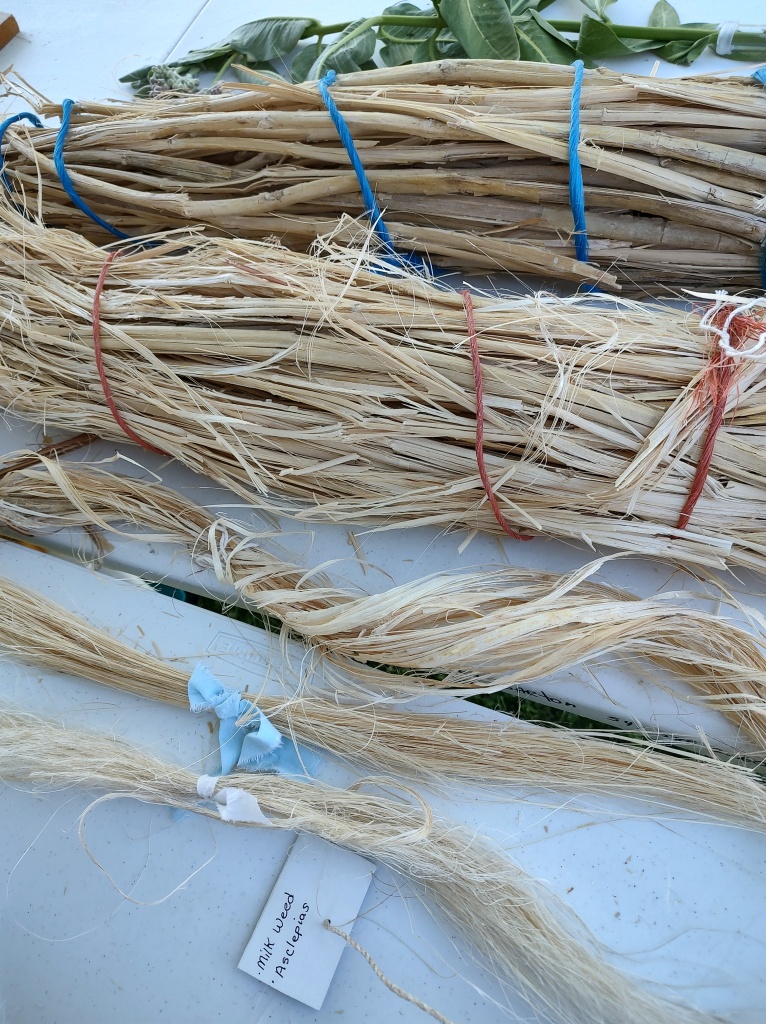
After the stem is cracked the center or the plant is scraped out and then the outer layer of the stem is made wet and the “skin” of the plant is scraped off with a table knife or a flat piece of obsidian. All that is left is the fiber.
The fiber can be used to weave cloth or braid to make strings.
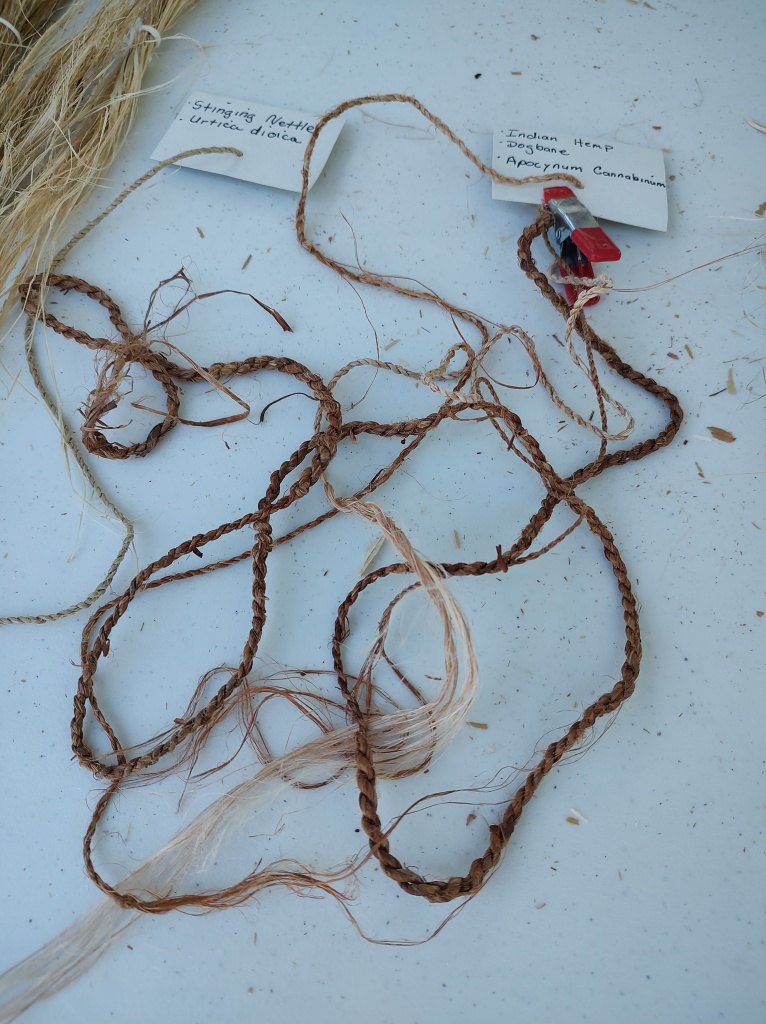
If you know the plants and know how to extract the fibers from the stems, you can make a shoestring, or a snare, or any number or items to help you if you are out in the wilderness. I am already conjuring up ways Hawke can use this method of making a snare or fishing if he is in the woods and can’t travel back to civilization.
I enjoy events where I can learn something new and possibly put it in a book and enlighten others.

